Let’s get this settled for once and all. The bison, which is probably the most misnamed animal in the whole world, deserves to be called by its proper name, and that name ain’t buffalo. Early settlers to the West thought it resembled buffalo from Africa and Asia, so the name buffalo eventually stuck and ended up being on the nickel, in songs, and, most unfortunately, on menus and grocery store shelves. Just take a look at the physical characteristics of bison, Cape and water buffalo, and while they’re all bovines, you’ll see that they’re continents apart in their builds, beards, horns and other features.
1. With its big hump of muscle and huge head, the bison is the Mack truck of the animal kingdom. The Cape buffalo and water buffalo, with smaller heads and shoulders that are more proportional to the rest of their bodies, might be considered SUVs.
2. Bison bulls (the males) are longer than Cape and water buffalo. From head to rump, the bulls can grow up to 12 ½ feet and weigh in at 2,200 pounds. The Cape buffalo is around 11 feet and weighs under 2,000 pounds. While the water buffalo at 9 feet is shorter, it’s heavier than the others, weighing as much as 2,650 pounds. Bison are faster than buffalo, too.
3. When it comes to horn size, the water buffalo rules, with its massive, crescent-shaped horns spanning up to six feet in both male and female. The Cape buffalo’s horns sweep outward in the shape of a handlebar mustache, up to three feet or more on the males and are thicker than the female’s. Bison horns are about two feet in both sexes.
4. Harsh winters and hot summers call for a change of coats, and the bison are well-equipped for seasonal changes on the Great Plains. Their heavy, shaggy coats keep them warm in cold weather; these are shed in the summer. The Cape buffalo and the water buffalo have thinner coats of hair which they keep year-round.
5. Bison have beards—long, shabby beards that loop around the ribcage and give insulation from the cold. The two buffalo from milder climates are beardless.




